Chapter 3: Dynamics of Forms
“The stable state of a living organism is to be dead” – Schrödinger
From this irruption into the world of nature we’ll keep two elements in mind: on one hand the forms taken by nature are often dependent on context and beyond a macroscopic pattern vary greatly. On the other hand concerning structures everything is a question of energy, energy optimization.
Concerning the question of forms and learnings for those of our organizations, we’ll make a detour through René Thom’s catastrophe theory, let’s say especially that it will serve as an alibi to get out of Cartesian thinking, and think in verbs (dynamics, energy again).
Aspects of energy optimization seem essential to me. They are everywhere in our organizations: optimization of communication flow, optimization of value creation flow, optimization of people’s involvement (energy), etc… Finally, and not least, optimization of pure energy resources, those of the planet.
Catastrophe theory
I’m advancing on mined ground. Catastrophe theory is subject to numerous criticisms; I’m not at all (at all) a mathematician. I just want to take advantage of this theory, and especially the images it conveys to get out of the formula and call on the verb. More clearly: it doesn’t matter to really understand how to apply this theory which moreover doesn’t really apply (hence the heavy fire of criticism). What matters to me is to start thinking differently about the forms of our organizations: as matter that seizes opportunities, matter not square, but opportunistic following principles and not too precise rules. It’s often different while being common. It’s not thought of in equation resolution or calculation, but in energy and thus in dynamics. The verbs of catastrophe theory call for understanding one’s organization not as an assembly of calculations, but as magma subject to dynamics.
Theory of form changes
We must rather understand catastrophe theory as the theory of form changes. A catastrophe, for René Thom, is an event that arises, a change of situation: attractions, forces present that trigger a form change. René Thom distinguishes seven types of elementary catastrophes and associated models. A strong criticism against this theory is precisely what I like about it: its openness to soft sciences, we won’t simply find formulas (which I’m quite unable to understand), but especially verbs to represent these forces and changes in action.
Instead of catastrophes let’s say singularities: when something singular happens the situation changes. According to the number of parameters and variables, as long as we remain in an elementary domain, Thom indicates seven singularities and describes them, we’ll see them below. Zeeman, a follower of Thom, proposes numerous applications of catastrophe theory: to prison revolts, stock market crashes, behavior of angry or frightened dogs, etc. So naturally sociology and psychology seized catastrophe theory, form changes, and we’ll try to use it to think about movements and form changes of an organization. However, we often read that quantitative application of catastrophe theory to human sciences is a dangerous exercise, I think we just need to be careful between intuition, inspiration and playing sorcerer’s apprentices.
I’m going to look for a set of forms and movements that allow us to better perceive the organization, and thus propose alternative tools to the hierarchical, flat and mechanical vision usually offered to us. I’m going to look for verbs and words, metaphors that can be integrated much more easily as organizational patterns (you’ll see below the “fold” or “gather”). I’m going to look for an impression, a sketch of a Japanese painting, a contemplative side in the broad lines of organizational forms. I don’t want to fall back into the trap of a rule that says if such singularity occurs then we’ll necessarily get such type of organization, just an overall understanding of dynamics at play. To quote Thom: “This goes against the currently dominant philosophy, which makes the analysis of a system into its ultimate constituents the first step to accomplish to reveal its nature. We must reject as illusory this primitive and quasi-cannibalistic conception of knowledge, which wants knowing a thing to require first reducing it to pieces”. We are in the advent of a holistic approach to the organization. We must see the whole. Hence an approach by silhouette, by dynamics. That’s what Thom highlights 40 years ago.
Elementary catastrophes and organizations
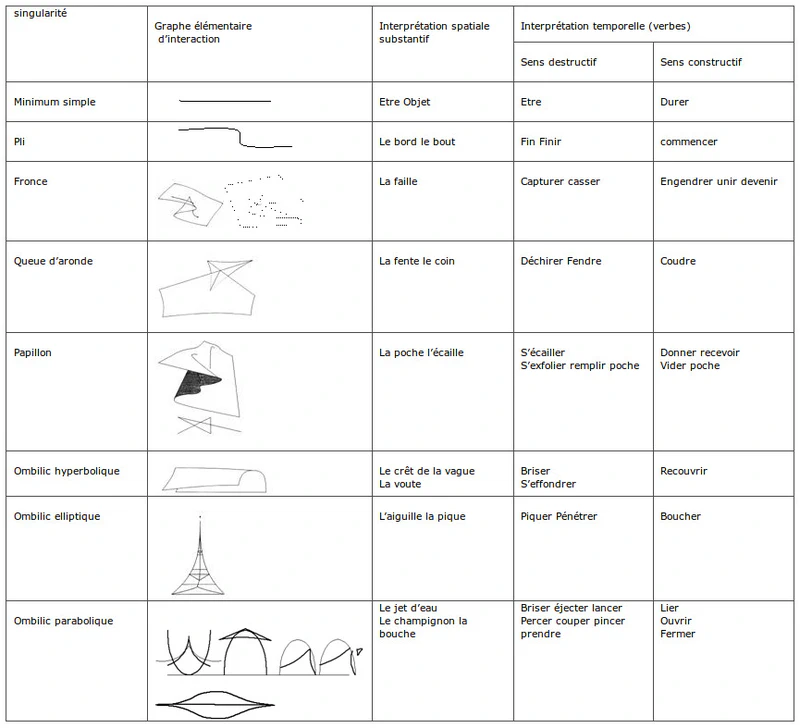
In the table above, you see the seven elementary catastrophes. Each catastrophe, singularity, is triggered by a certain number of parameters and causes certain variables, forms. We say there are seven elementary catastrophes, elementary, because we consider few input parameters (from one to two). You’ll also observe – in the table always – that we can attach to each catastrophe a spatial and temporal interpretation (through a verb). Thom deliberately seeks – in agreement with the pre-Socratics – to express his ideas through words and images from life.
“Our models, writes Thom, attribute all morphogenesis to a conflict, a struggle between two or more attractors; we thus find the ideas (2,500 years old!) of the first pre-Socratics, Anaximander and Heraclitus. These thinkers have been accused of primitive confusionism, because they used terms of human or social origin like conflict, injustice… to explain the appearances of the physical world. Wrongly in our view, because they had this profoundly correct intuition: the dynamic situations governing the evolution of natural phenomena are fundamentally the same as those governing the evolution of man and societies, thus the use of anthropomorphic terms in Physics is fundamentally justified”.
Elementary catastrophes by order of increasing complexity
The fold

The first catastrophe is the “fold”. Imagine a sheet you fold. There’s an “end”, a “finish”. We associate the verb “to finish”, or “to begin”, with the fold, it finishes or begins. There’s only one parameter, we’re on one side or the other of the fold, therefore only one result, one output variable. If I try to take an image: again, that’s what I like in Thom’s approach, his will to return to the pre-Socratics who brought their mathematical analyses back to images we can naturally grasp. So as an image we observe communication within a team. This team grows, grows, grows: that’s the parameter, we regularly add 1 member to the team. Suddenly we reach a point, the catastrophe, the singularity, and communication changes completely: it’s the fold. We’ve passed to the other side. In simple cases of edge, end, the organization operates a fold, but a clear fold. A singularity occurs which triggers a result (the fold).
The cusp
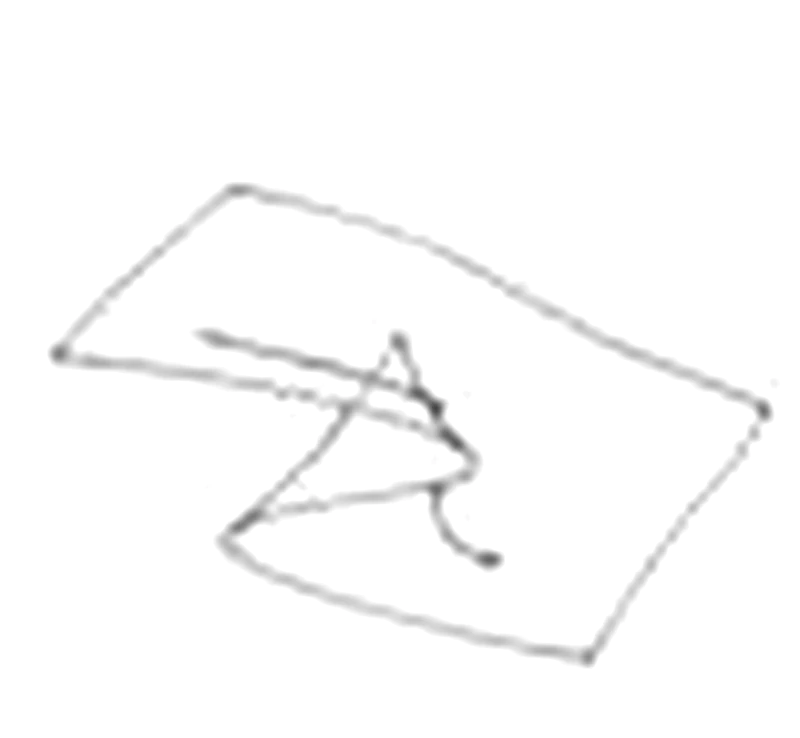
The cusp is the fold of fabric in your shower curtain. But this fold is a curve. We imagine a ball passing from one side or the other of a small hill. It all depends on the parameters propelling the ball: it will pass quickly or climb to come back down without crossing the Rubicon. It’s with the cusp catastrophe that Zeeman applies the theory to the dog: between fear and aggressivity: what parameters and according to what forces the dog will pass from fear (flight) to aggressivity (attack). We enter the mathematical aspect of the theory, and I’m unable to master it. But I can question the forces and attractions that make me evolve on the cusp and switch from one side or the other. For example: the cusp has two input parameters, we could still say the size of a team, and let’s say its co-location. That is we have more or fewer people in a team, and they are more or less co-located. With these different parameters and their intensity, we’ll describe a more or less steep cusp (one output variable) that will describe the functioning of communication within the team. Will it gently crumble, will it suddenly break, at what moment should we generate a new team.
The keywords are capture, break: we cross the summit of the cusp, passing to the other side: we generate, we become, we unite. I’m talking about team and communication, you can consider the expansion of subsidiaries across a continent, the different departments of a solution, the life of a company product, etc.
The swallowtail
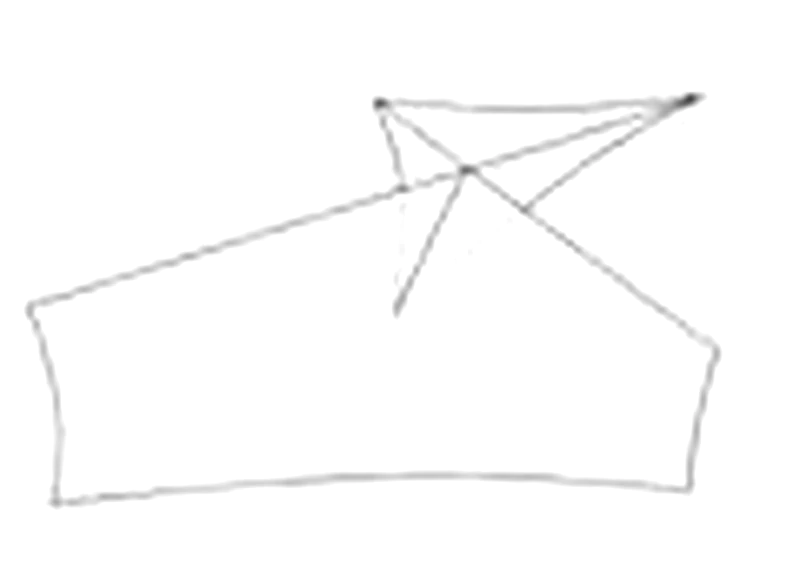
Think of a swallow’s tail: at the intersection, there’s a sort of superposition, which we can perceive as a tear or on the contrary a seam. There are three input parameters and one output variable (I write this for those who understand something). We thus evoke problems of superposition, overlap, tension, tear within the company. Two product lines that overlap, should we merge them, sew them? At what moment does this product, this line, tear into two (same for teams, again). I won’t dig further and I’ll let you find the parameters that will govern this form change, with the swallowtail there must be three.
The butterfly
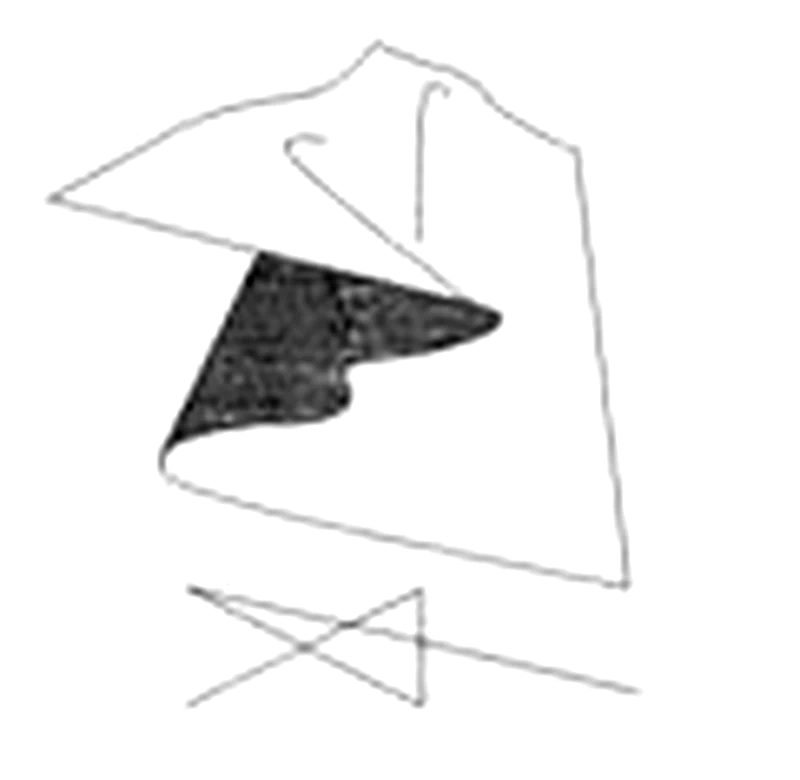
I’ll now limit myself to associated verbs, forms become complicated and I haven’t yet integrated the associated model enough… What’s interesting in the butterfly (four parameters! and still one output variable) is the idea of a hidden surface, covered, a pocket, which flakes, exfoliates, that is sheds in lamellae. So it empties or fills. Another metaphor, but also therefore a theory allowing to apprehend the organization’s movements.
The last three elementary catastrophes are a bit more complex, because they propose two output variables.
The wave, the hair, the mushroom

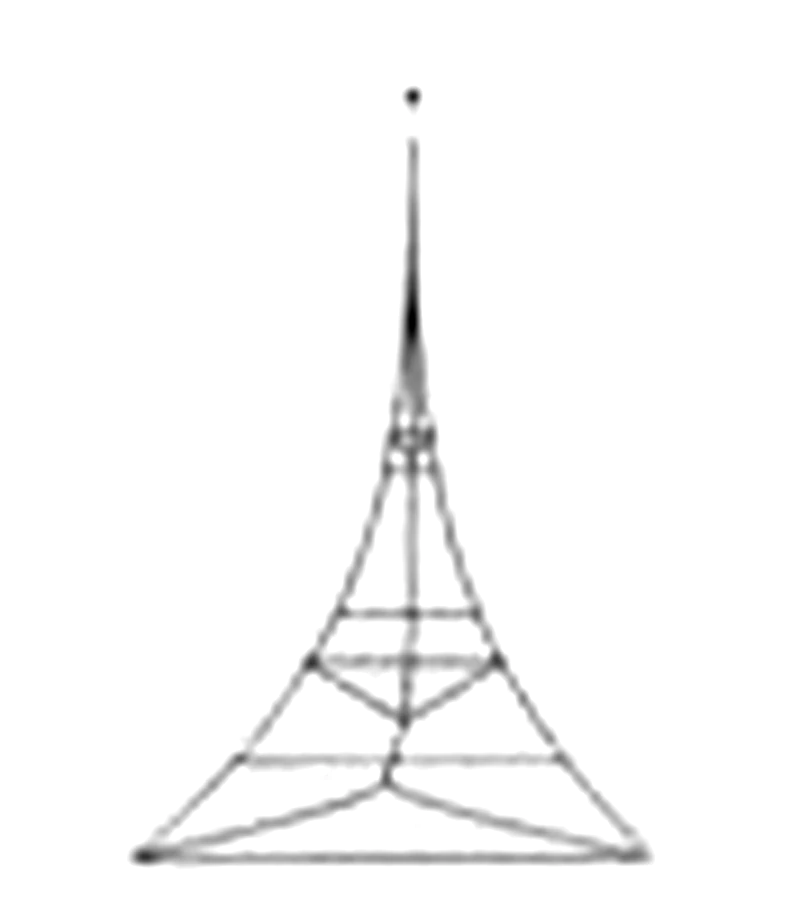

Same, for now I have the impression it becomes vain for me to understand the mathematical aspects and calculation of these different forms. I’m only interested in verbs that can give me a way to apprehend this theory and project it onto my world.
- The wave (hyperbolic umbilic): Read break, collapse, cover for the wave. Think of subsidiary acquisition, sector coverage, but also there the sudden collapse of a wave having reached its crest, catch the notion of vault.
- The hair (elliptic umbilic): Prick, penetrate, plug.
- The mushroom (parabolic umbilic): Break, eject, launch, pierce, cut, bind, open, close.
What to do with all this
Think of your organization as a whole, governed by events that trigger forms and dynamics. If you’re more mathematician than me you can use formulas, but I think tensions suffice to understand we’re approaching, perhaps, a singularity, and therefore a form change.
Keep in mind that the most adapted forms to your organization are probably the most economical in energy. For that, let the natural form emerge. Used thus, the word natural implies the simplest, the most opportune, the one requiring the least energy, and proposing the best context optimization.
In this sense chance that prefigures a termite mound underlines the interest of leaving time for emergence. Nothing against pattern repetition, which will be good to propagate your energy at lower cost (communication, know-how, etc.), but know how to place the cursor at the right place: it’s the least fixed, finished pieces of your organization that will be simplest to evolve.
Think of crystal twins to think of transverse currents in the organization (surprisingly these twins closely resemble the guilds proposed by an organization like Spotify).